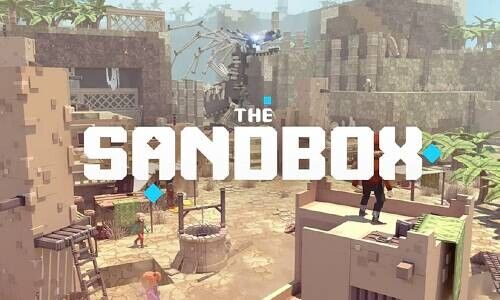A stolid cooperative bank meets the ethereal world of the Metaverse and takes a look at the potential of virtual real estate.
Raiffeisen banks dominate the traditional Swiss mortgage market and would seem to have nothing in common with the virtual world. But an interesting question emerges on whether the red logo of the cooperative members will soon be found in virtual worlds like The Sandbox, Decentraland, and, Otherside. Indications of this can be found in a current real estate study, by Raiffeisen Switzerland chief economist Martin Neff published on Thursday, which looks at the promises of «virtual real estate». The phrase itself seems paradoxical.
Mind-Boggling Value Gains
It quickly becomes clear the Raiffeisen bankers do not trust these virtual worlds, with trading in non-fungible tokens (NFTs) having produced strange results in recent months. «In addition to digital works of art, original images and video recordings, or objects in video games, it is now also possible to acquire real estate in the digital world, the so-called metaverse. And this sometimes at exorbitant prices,» they write.
Anyone who had snatched up a plot of land in The Sandbox game environment in January 2021 at an average price of $150 would have enjoyed an increase of nearly 11,000 percent by October. Exorbitant indeed.
Location, Location, Location
Given flattening prices on the Swiss real estate market, this should sound promising to mortgage bankers, especially since some of the laws applying to real estate around Lake Zurich also do in the metaverse. «Location, location, location» is also the magic word for real estate buyers in cyberspace, as it turns out. «As with hard real estate, location above all determines the price,» the authors note.
In a metaverse, the relative attractiveness of different plots of land is very much defined by the user volume in the immediate vicinity. In other words, the more players there are on average in the vicinity of one's land, the more revenue could theoretically be generated with the plot, in turn justifying higher prices.
Nagging Suspicion
To be sure, there are just big differences from the traditional real estate market, the study notes. «While in the real world land is fundamentally a scarce, limited commodity, in the metaverse new land can be created simply at the click of a mouse.»
There is at least one other difference. While there have been warnings of price bubbles on the Swiss real estate market for years, they have yet to burst, while virtual plot prices have fallen off a cliff since last fall, following the broad crash of crypto assets. In The Sandbox, prices had fallen back below $2,500 by the end of June.
The Raiffeisen report ponders whether many of these projects are simply about trading digital ground above all else, rather than creating an actual metaverse.
Risk-Loving Speculators
For the economists, one thing is certain. The generally very new metaverse projects are primarily a playing field of risk-loving speculators, both in the short-term and the longer-term perspective. Real estate investments can be highly risky, and total losses on the invested capital are not to be ruled out. This is exacerbated by the fact that many projects are tied to cryptocurrencies for technical reasons, the future of which is also difficult to estimate accurately at present.
«Even though investing in the old familiar indirect real estate investments can seem a bit boring compared to the metaverse, these are likely to be the much more sensible alternative for the vast majority of investors,» they conclude. Over the past ten years, the total return of Swiss real estate stocks and real estate funds averaged «only» 150 and 85 percent, respectively. But on the other hand, the risks of fluctuation in value and default have remained within much narrower limits.
In the end this seems like a game of virtual «Monoply.»


































